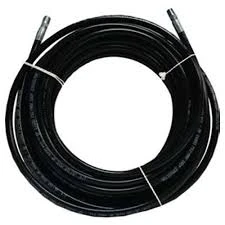Different Types of Galvanized Iron Pipe Couplings for Various Applications
Types of GI Pipe Couplings A Comprehensive Overview
Galvanized iron (GI) pipes, renowned for their durability and resistance to corrosion, are widely used in plumbing, construction, and various industrial applications. To ensure efficient and secure connections between these pipes, several types of couplings are employed. Understanding the different types of GI pipe couplings is essential for both professionals in the field and DIY enthusiasts.
1. Socket Couplings
Socket couplings are one of the most common types used for connecting two GI pipes. These couplings feature a cylindrical socket on one end, allowing the male end of the pipe to be inserted for a secure fit. Typically made of galvanized iron, socket couplings are ideal for joining pipes of the same diameter. They provide a robust connection that can withstand high pressure and prevent leaks, making them suitable for water supply lines and drainage systems.
2. Screwed Couplings
Screwed couplings are designed to connect GI pipes with threaded ends. These couplings have internal threads that match the pipe threads, allowing them to be easily screwed together. This type of coupling is versatile and can be disassembled and reassembled without damaging the pipes, making it an excellent choice for applications that may require future adjustments or repairs. Screwed couplings are particularly popular in plumbing systems due to their reliability and ease of use.
When connecting pipes of different diameters, reducing couplings are used. These couplings have one end that is smaller than the other, allowing for a secure fit between pipes that vary in size. Reducing couplings are crucial in plumbing and industrial applications where it is necessary to adapt a larger pipe to a smaller outlet or to accommodate varying flow rates. They help to maintain efficient fluid dynamics while minimizing pressure loss.
types of gi pipe coupling

4. Elbow Couplings
Elbow couplings are specifically designed to change the direction of fluid flow within a piping system. These couplings come in various angles, with 90-degree and 45-degree elbows being the most common. Elbow couplings allow for smooth transitions in piping layouts, which is essential in both residential and industrial settings. Properly using elbow couplings can mitigate pressure drops and reduce the wear and tear on the pipes by preventing abrupt changes in direction.
5. Tee Couplings
Tee couplings are designed to create a branch in the pipeline, allowing for a third pipe to connect at a right angle. This type of coupling is useful in complex plumbing systems where multiple outlets from a single pipe are required. Tee couplings are vital for distributing water or other fluids to multiple destinations efficiently. They come in various sizes to accommodate different pipe diameters, ensuring compatibility across the system.
6. Union Couplings
Union couplings offer an easy way to connect and disconnect two GI pipes for maintenance or inspection purposes. They typically consist of three parts two nuts and a central body. Unlike other couplings that might require threading or soldering, union couplings enable quick assembly and disassembly when needed. Their utility is particularly beneficial in systems requiring regular maintenance or seasonal adjustments.
Conclusion
Selecting the appropriate type of GI pipe coupling is crucial for ensuring the integrity and efficiency of plumbing and industrial systems. By understanding the various types of couplings available—socket, screwed, reducing, elbow, tee, and union—professionals can make informed decisions that enhance performance, longevity, and safety in their applications. Whether working on a large construction project or a simple DIY task, the right coupling choice is vital for achieving successful and reliable piping connections.
-
Ultimate Spiral Protection for Hoses & CablesNewsJun.26,2025
-
The Ultimate Quick-Connect Solutions for Every NeedNewsJun.26,2025
-
SAE J1401 Brake Hose: Reliable Choice for Safe BrakingNewsJun.26,2025
-
Reliable J2064 A/C Hoses for Real-World Cooling NeedsNewsJun.26,2025
-
Heavy-Duty Sewer Jetting Hoses Built to LastNewsJun.26,2025
-
Fix Power Steering Tube Leaks Fast – Durable & Affordable SolutionNewsJun.26,2025

